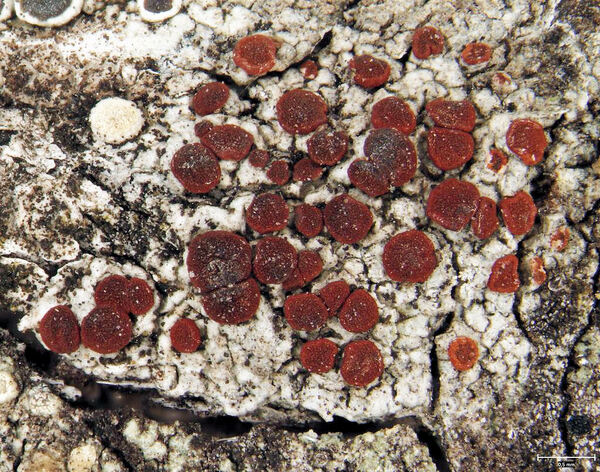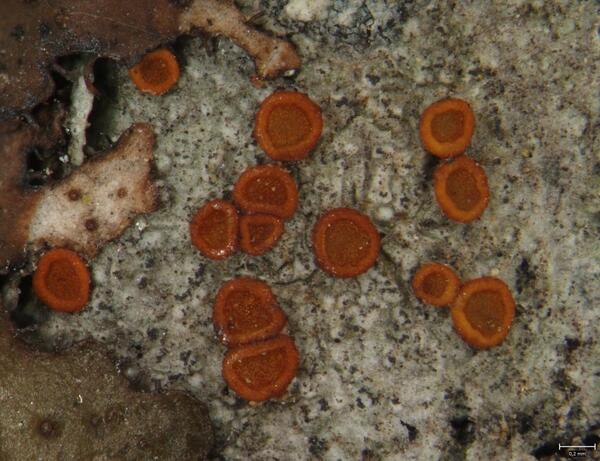Blastenia subathallina (H. Magn.) Arup & Vondrák
in Vondrák & al., J. Syst. Evol. 58, 3: 322, 2019.. Basionym: Caloplaca subathallina H. Magn. - Bot. Not.: 82, 1951.
Synonyms:
Distribution: C - Abr (Di Nuzzo & al. 2021, Gheza & al. 2021, Vallese & al. 2022), Sar (Vondrák & al. 2020). S - Si (Vondrák & al. 2020).
Description: Thallus crustose, episubstratic, grey, continuous to areolate, <100 μm thick, sometimes delimited by a black prothallus. Apothecia biatorine, dark red (rarely orange-red), sessile, 0.3-0.5 mm across, with a flat to slightly convex disc and a smooth, often paler, thin proper margin (thalline margin always absent). Proper exciple prosoplectenchymatous, orange in outer part, colourless within, amyloid; epithecium orange-brown, granular, K+ red, C+ purple in section; hymenium colourless, not inspersed with oil droplets, amyloid; paraphyses sparingly branched, 1.5-2 μm thick in lower part, the apical cells only slightly swollen; hypothecium colourless to pale yellowish brown. Asci 8-spored, cylindrical-clavate, Teloschistes-type. Ascospores 2-celled, polarilocular, hyaline, ellipsoid, (12-) 13-14(-15) x (4-)5-6(-8) μm, the equatorial thickening (“septum”) 4-6 µm. Pycnidia rare, dark grey, with the Cinereorufa-green pigment. Conidia bacilliform, rarely narrowly ellipsoid, 3-5 x 1-1.5 μm. Photobiont chlorococcoid. Spot tests: thallus K-, C-, KC-, P-; apothecia K+ red C+ purple in section. Chemistry: chlorinated anthraquinones in apothecia, plus non-chlorinated anthraquinones with parietin reduced or absent; thallus without anthraquinones; Cinereorufa-green pigment hardly detectable, except in pycnidial walls.Note: according to Vondrák & al. (2020), this species differs from all other species of the B. hungarica-group by its chemistry (chlorinated chemosyndrome only). It is known from many stations, mainly in the Mediterranean Region, being most frequent on twigs of deciduous and coniferous trees and shrubs, with a wide altitudinal range. The only Italian stations are from Sardinia and the Aeolian Islands, but the species may be more widespread in Mediterranean Italy.
Growth form: Crustose
Substrata: bark
Photobiont: green algae other than Trentepohlia
Reproductive strategy: mainly sexual
Commonnes-rarity: (info)
Alpine belt: absent
Subalpine belt: absent
Oromediterranean belt: absent
Montane belt: very rare
Submediterranean belt: absent
Padanian area: absent
Humid submediterranean belt: absent
Humid mediterranean belt: rare
Dry mediterranean belt: absent
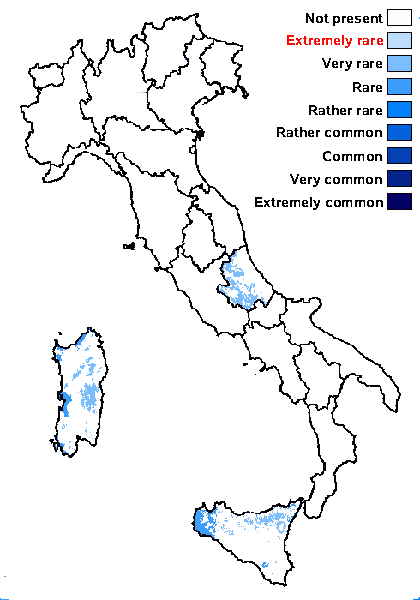
Predictive model
Herbarium samples
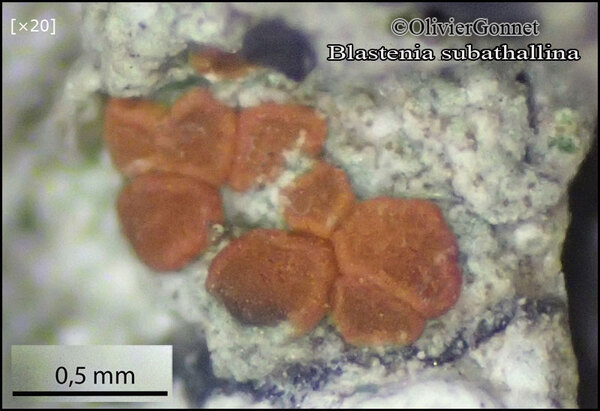
Courtesy: Olivier et Danièle Gonnet - Source: https://www.afl-lichenologie.fr/Photos_AFL/Photos_AFL_B/Textes_B3/Blastenia_subathallina.htm
France, Aéroport Campo dell' Oro, alt. 5 m - Corse - (20) - sur écorce de ganivelles (clôture de lattes verticales) de Castanea
9/10/2016
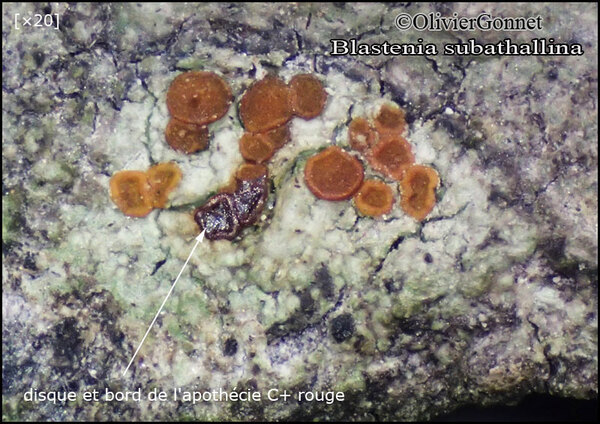
Courtesy: Olivier et Danièle Gonnet - Source: https://www.afl-lichenologie.fr/Photos_AFL/Photos_AFL_B/Textes_B3/Blastenia_subathallina.htm
France, Aéroport Campo dell' Oro, alt. 5 m - Corse - (20) - sur écorce de ganivelles (clôture de lattes verticales) de Castanea
9/10/2016
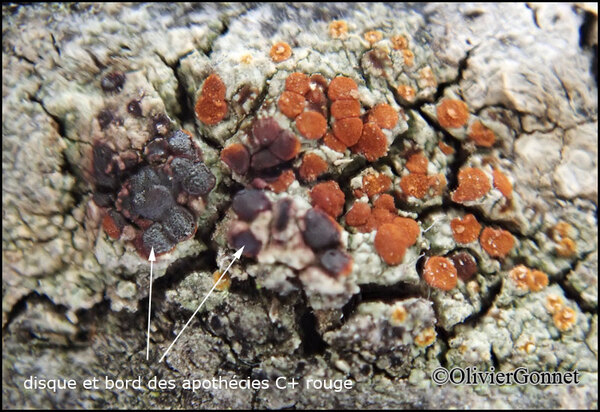
Courtesy: Olivier et Danièle Gonnet - Source: https://www.afl-lichenologie.fr/Photos_AFL/Photos_AFL_B/Textes_B3/Blastenia_subathallina.htm
France, Aéroport Campo dell' Oro, alt. 5 m - Corse - (20) - sur écorce de ganivelles (clôture de lattes verticales) de Castanea
9/10/2016
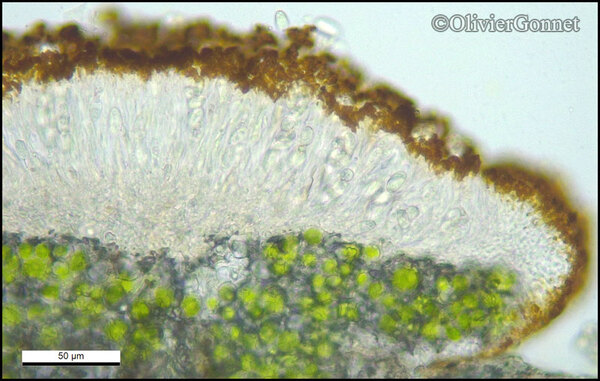
Courtesy: Olivier et Danièle Gonnet - Source: https://www.afl-lichenologie.fr/Photos_AFL/Photos_AFL_B/Textes_B3/Blastenia_subathallina.htm
France, Aéroport Campo dell' Oro, alt. 5 m - Corse - (20) - sur écorce de ganivelles (clôture de lattes verticales) de Castanea
9/10/2016
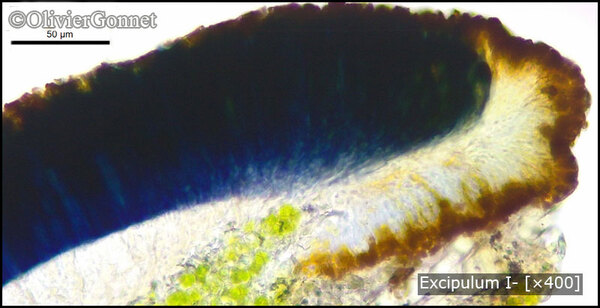
Courtesy: Olivier et Danièle Gonnet - Source: https://www.afl-lichenologie.fr/Photos_AFL/Photos_AFL_B/Textes_B3/Blastenia_subathallina.htm
France, Aéroport Campo dell' Oro, alt. 5 m - Corse - (20) - sur écorce de ganivelles (clôture de lattes verticales) de Castanea
9/10/2016
Growth form: Crustose
Substrata: bark
Photobiont: green algae other than Trentepohlia
Reproductive strategy: mainly sexual
Commonnes-rarity: (info)
Alpine belt: absent
Subalpine belt: absent
Oromediterranean belt: absent
Montane belt: very rare
Submediterranean belt: absent
Padanian area: absent
Humid submediterranean belt: absent
Humid mediterranean belt: rare
Dry mediterranean belt: absent

Predictive model
| Herbarium samples |

Courtesy: Olivier et Danièle Gonnet - Source: https://www.afl-lichenologie.fr/Photos_AFL/Photos_AFL_B/Textes_B3/Blastenia_subathallina.htm
France, Aéroport Campo dell' Oro, alt. 5 m - Corse - (20) - sur écorce de ganivelles (clôture de lattes verticales) de Castanea
9/10/2016

Courtesy: Olivier et Danièle Gonnet - Source: https://www.afl-lichenologie.fr/Photos_AFL/Photos_AFL_B/Textes_B3/Blastenia_subathallina.htm
France, Aéroport Campo dell' Oro, alt. 5 m - Corse - (20) - sur écorce de ganivelles (clôture de lattes verticales) de Castanea
9/10/2016

Courtesy: Olivier et Danièle Gonnet - Source: https://www.afl-lichenologie.fr/Photos_AFL/Photos_AFL_B/Textes_B3/Blastenia_subathallina.htm
France, Aéroport Campo dell' Oro, alt. 5 m - Corse - (20) - sur écorce de ganivelles (clôture de lattes verticales) de Castanea
9/10/2016

Courtesy: Olivier et Danièle Gonnet - Source: https://www.afl-lichenologie.fr/Photos_AFL/Photos_AFL_B/Textes_B3/Blastenia_subathallina.htm
France, Aéroport Campo dell' Oro, alt. 5 m - Corse - (20) - sur écorce de ganivelles (clôture de lattes verticales) de Castanea
9/10/2016

 INDEX FUNGORUM
INDEX FUNGORUM
 GBIF
GBIF
